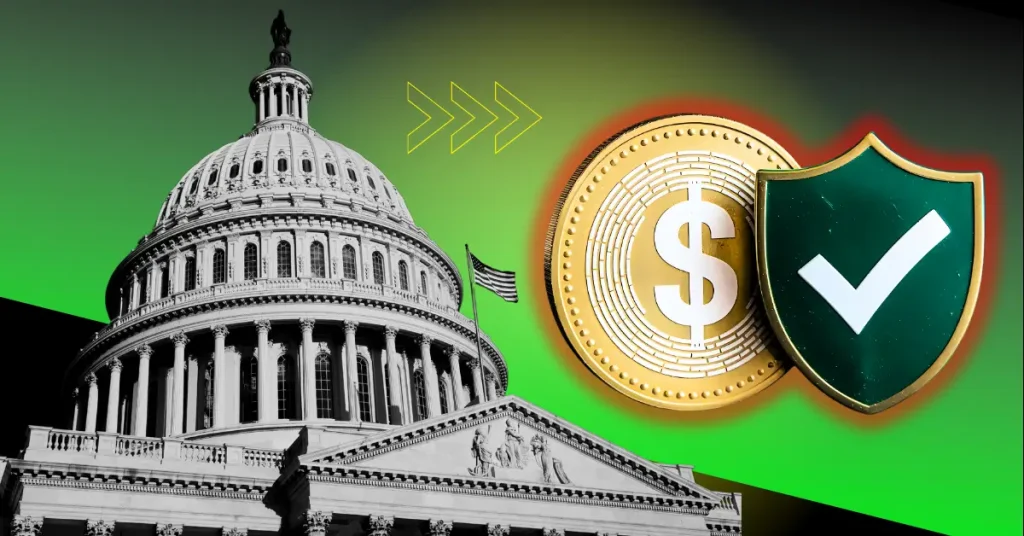Bank of America Crowns 4 Dominant Players in the 2025 Stablecoin Revolution
The stablecoin market just got its marching orders—straight from Wall Street's ivory tower.
Bank of America's latest research drops the mic on who's actually winning the race to tokenize the dollar (and every other currency, frankly). Spoiler: it's not the usual crypto anarchists.
The Four Horsemen of Dollar-Pegged Apocalypse
Forget 'decentralized' purists—2025's stablecoin boom belongs to hybrids that play nice with regulators while moving at blockchain speed. BofA's picks? Heavyweights with one foot in TradFi and the other in DeFi's endzone.
Institutional-Grade Rails Win Again
Surprise—the 'winners' all share three traits: compliance teams bigger than their dev teams, actual banking partnerships, and liquidity pools deeper than a central banker's excuses after inflation spikes.
One cynical take? This isn't crypto's victory—it's finance co-opting the useful bits before the SEC finishes killing the fun parts.

Stablecoins may be heading for their biggest breakthrough yet. With the GENIUS Act, a new bill focused on regulating stablecoins, expected to hit the U.S. House floor this week, analysts are closely watching what comes next. Also, let’s not forget ‘Crypto Week’ that kicked off yesterday.
According to Bank of America, the upcoming legislation could help stablecoins MOVE deeper into traditional finance, changing how money moves across systems. And with that, four key areas of the market are likely to benefit.
Let’s dive in.
Ethereum: The Tech Behind the Tokens
Most stablecoins don’t operate on their own; they rely on blockchains like ethereum to function.
Bank of America’s latest digital asset research, titled “On Chain”, positions Ethereum as a key player in the future of stablecoins. The report highlights Ethereum as a core infrastructure layer for both private and institutional stablecoin use, calling it a “gateway” for investors entering the space.
Ethereum currently hosts over 50% of all circulating stablecoins, and its compatibility with smart contracts makes it ideal for handling large-scale payments and programmable digital dollars. Payment firms like Stripe are also building on Ethereum.
In fact, the U.S. Treasury expects the stablecoin market to reach $2 trillion in five years, and Ethereum is expected to power much of that growth.
Big Banks Are Getting In
Traditional banks are no longer sitting on the sidelines.
In June, JPMorgan launched JPMD, a tokenized deposit coin that runs on an Ethereum-based blockchain developed with Coinbase. Meanwhile, BNY Mellon is now working with Ripple as the reserve custodian for its new USD stablecoin. This is a strong signal that legacy institutions are warming up to crypto infrastructure.
Payments Giants Already Have a Head Start
Companies like Visa, Mastercard, and PayPal have been preparing for this shift for years.
Visa processed its first stablecoin transaction with USDC back in 2020. Mastercard is now working with Circle to enable stablecoin payments for merchants, and PayPal rolled out its own stablecoin, PYUSD, in 2023. These are great real-world payment strategies!
Shopify Pushes Ahead With USDC
E-commerce is getting on board too.
Shopify has teamed up with Circle to allow USDC payments, making it easier for merchants to accept crypto from global customers. Bank of America sees cross-border payments as one of the biggest use cases for stablecoins and Shopify is moving early.
A Long Road, But the Pieces Are in Place
It might take three to five years to fully build the systems needed for stablecoin adoption, according to Ebrahim Poonawala, Bank of America’s head of North American banks research. But with regulation coming and big institutions already involved, that timeline could move faster than expected.

